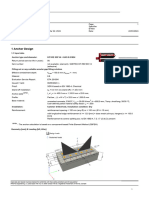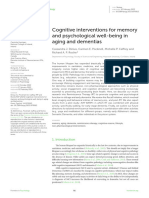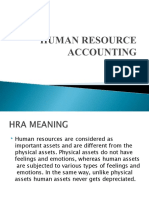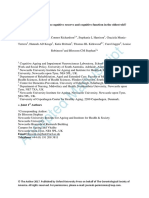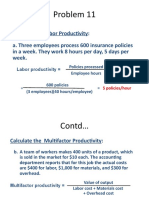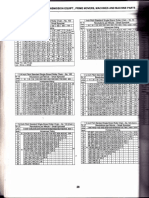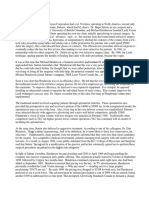Investigating the Link between Cognitive Reserve and Early Signs of Cognitive Decline
Investigating the Link between Cognitive Reserve and Early Signs of Cognitive Decline
Volume 10, Issue 3, March – 2025 International Journal of Innovative Science and Research Technology
ISSN No:-2456-2165 https://doi.org/10.38124/ijisrt/25mar1958
Investigating the Link between Cognitive
Reserve and Early Signs of Cognitive Decline
Vishal Kumar Gupta1; Yogendra Pratap Singh 2;
Vibha Sharma 3; Asit Kumar Maurya 4
1.
Assistant Professor, Department of Psychology, Government Degree College, Bahua Dehat, Fatehpur,
U.P. 212663
2.
Assistant Professor, Department of Psychology, Government Degree College, Kanth, Shahjahapur, U.P.
3.
Professor, Department of Clinical Psychology, Institute of Human Behavior & allied Sciences (IHBAS),
Delhi.
4.
Lecturer (Psychology), Department of Psychology and Guidance (Manovigyanshala), U.P. Prayagraj,
Corresponding Author: Vishal Kr Gupta
Publication Date: 2025/04/14
Abstract: As the world's population ages, the prevalence of cognitive impairment and dementia increases. The objective of
the current study was to examine cognitive reserve (CR) in older adults with mild cognitive impairment (MCI), those with
risk factors (RF), and healthy controls. Sixty participants (20 each group) performed evaluations such as the Mini Mental
State Examination (MMSE) and Cognitive Reserve Index questionnaire (CRIq). Analysis of variance (ANOVA) found
significant differences in CR scores between groups (F (2, 57) = 12.366, p <.001). Post-hoc analysing demonstrated that
those with MCI had considerably lower CR ratings compared to HC (mean difference = -53.15, p <.001), while RF did not
differ significantly from HC (mean difference = 20.75, p =.141). These results indicate that higher CR may mitigate
cognitive decline in aging adults and underscore the importance of preventive interventions targeting CR. Further
research is needed to explore longitudinal effects and mechanisms underlying CR in cognitive aging and dementia
prevention.
Keywords: Cognitive Reserve, Mild Cognitive Impairments, Risk Factors, Cognitive Decline, Aging.
How to Cite: Vishal Kumar Gupta; Yogendra Pratap Singh; Vibha Sharma; Asit Kumar Maurya (2025) Investigating the Link
between Cognitive Reserve and Early Signs of Cognitive Decline. International Journal of Innovative Science and Research
Technology, 10(3), 2818-2823. https://doi.org/10.38124/ijisrt/25mar1958
I. INTRODUCTION illness, and a significant portion (77%) struggle with two or
more. Heart disease, stroke, cancer, and diabetes top the list
The world's population is aging rapidly. There are of common chronic conditions. These, along with high
currently older adults than ever before, and this number is blood pressure, diabetes, and HIV, further elevate the risk of
expected to keep growing. By 2050, the number of people neurological and mental illnesses like dementia and
over 60 will double, making up a significant portion of the depression. Dementia, or the loss of cognitive ability, affects
global population. This trend is having a major impact on roughly 47.5 million individuals worldwide, with forecasts
societies around the world. India is also experiencing a rapid showing a nearly threefold increase by 2050. Additionally,
rise in its older adult population. This trend started some the World Health Organization (2021) reports that over 15%
time ago and shows no signs of slowing down. From 2001 of adults over 60 experience some form of mental disorder,
to 2011 alone, India's elderly population jumped from 77 with depression being a prevalent issue.
million to 104 million. If current projections hold true, this
number could triple by 2050, reaching a staggering 300 Dementia warning signs can appear long before full-
million and making up one-fifth of the entire country's blown symptoms. These early signs often show up as a
population (based on India's 2011 census). condition called Mild Cognitive Impairment (MCI).
Individuals with MCI experience more forgetfulness and
With the rapid rise in older adults worldwide, it's thinking problems than you'd expect with normal aging, but
crucial to address the challenges they face and promote it's not severe enough to be considered dementia yet. Unlike
healthy aging practices. Statistics paint a concerning picture: dementia, they can still manage their daily lives
a vast majority (92%) of seniors have at least one chronic independently.
IJISRT25MAR1958 www.ijisrt.com 2818
Volume 10, Issue 3, March – 2025 International Journal of Innovative Science and Research Technology
ISSN No:-2456-2165 https://doi.org/10.38124/ijisrt/25mar1958
MCI is like a crossroads. It might be a stepping stone any other developmental or degenerative disease. Inclusion
on the path towards dementia. Because of this, it's a very Criteria for healthy participants: persons in the age range of
important condition for doctors and researchers to study. By 55 years and above, no history of risk factor on the basis of
focusing on MCI, they might be able to develop ways to personal data sheet, no Mild Cognitive Impairments on the
slow down or even prevent people with MCI from basis of MMSE. Exclusion Criteria for healthy participants:
progressing to full-blown dementia. Any other co-morbid medical illness (including
Cardiovascular and Cerebrovascular disease), any other co
In this context, it is theorized that cognitive reserve morbid psychiatric illness, history of any head injury or any
(CR) serves as a protective factor in cognitive impairment other developmental or degenerative disease.
and other age related decline. In its latest definition,
cognitive reserve (CR) is characterized as a brain B. Instruments
characteristic that allows for higher cognitive abilities even
in the presence of substantial brain changes, injury, or Personal Data Sheet:
disease associated with age related changes. Although the A self-created questionnaire was utilised to collect
protective function of cognitive reserve (CR) in clinical sociodemographic and risk factor data. The researcher
dementia conditions is well acknowledged, its role in specifically obtained demographic data (e.g., age, education,
preclinical conditions like Mild Cognitive Impairment occupation, marital status, etc.), medical conditions (e.g.,
(MCI) remains a topic of debate. history of psychiatric disorders, psychopathological
diagnosis), and physical health (e.g., brain injury,
However, certain studies have suggested that higher hypertension, diabetes, neurological diagnoses, and vitamin
levels of cognitive reserve (CR) are linked to a decreased B12 deficiency).
likelihood of developing Mild Cognitive Impairment (MCI)
(Nelson et al., 2021). Conversely, other studies have Mini Mental Status Examination (MMSE):
indicated that CR may act as a risk factor for the progression The Mini Mental State Examination (MMSE) was used
from MCI to dementia (Allegri et al., 2010; Xu et al., 2019). to evaluate cognitive deficits. This scale consists of 11 items
Based on this evidence, several researchers have suggested that test five aspects of cognitive functioning: orientation,
that cognitive reserve could be a focal point for registration, attention and computation, recall, and language.
interventions aimed at preventing MCI. The maximum score on this scale is 30, with a score of 23 or
lower indicating cognitive impairment.
Therefore, the primary objective of this study was to
detect and examine differences in cognitive reserve (CR) Cognitive Reserve Index Questionnaire (CRIq):
proxy scores between healthy adults and individuals with Cognitive reserve was assessed using the Cognitive
Mild Cognitive Impairment (MCI), and persons with risk Reserve Index Questionnaire (CRIq) developed by Nucci et
factors (history of Hypertension, Diabetes Mellitus, al. (2011). It is a three-point Likert scale with 20 items that
Hypothyroidism, Vitamin B12 deficiency). The hypothesis were divided into three sections: education, work activity,
posited that healthy older adults would exhibit higher CR and leisure time. Each participant receives scores in the
compared to older adults diagnosed with MCI, and adults three domains, and these are summed to determine the
with risk factors. overall level of cognitive reserve. According to Nucci et al.
(2011), the total score on the CRIq can be classified into
II. METHODS five levels: very low (score < 70), low-medium (70-84),
medium (85-114), high-medium (115-130), and high (>
A. Participants 130).
Sixty adults were selected by using purposive and
convenient sampling techniques from residential area of Premorbid Intelligence:
IHBAS and East Delhi and persons come with the patients. Premorbid Intelligence was assessed using several
Participants were selected using the inclusion and exclusion subtests, including information and digit span tests from the
criteria stated here. Inclusion Criteria for risk factor verbal adult intelligence scale (VAIS), the Abstraction and
participants as follows: persons in the age range of 55 years Ideation Fluency test from the Mukundan
and above, history of risk factor on the basis of personal Neuropsychological battery, and the Vocabulary test from
data sheet. Exclusion Criteria for the risk factor participants the WAIS (Wechsler Adult Intelligence Scale).
as follows: any other co-morbid medical illness (including
Cardiovascular and Cerebrovascular disease), any other co- C. Procedure
morbid psychiatric illness, history of any head injury or any The personal data sheet was administered following
other developmental or degenerative disease. Inclusion the establishment of rapport with participants, serving as a
Criteria for the Mild Cognitive Impairments participants: screening tool to determine eligibility based on inclusion
persons in the age range of 55 years and above, mild and exclusion criteria for the study. Information regarding
Cognitive Impairments on the basis of MMSE. Exclusion Risk factors, as taken in the study, was also gathered
Criteria for the Mild Cognitive Impairments participant: through the personal data sheet. Participants who met the
any other co-morbid medical illness (including inclusion criteria proceeded to further assessment scales,
Cardiovascular and Cerebrovascular disease), any other co- contingent upon providing informed consent. All assessment
morbid psychiatric illness, past history of any head injury or tools were administered individually across all participant
IJISRT25MAR1958 www.ijisrt.com 2819
Volume 10, Issue 3, March – 2025 International Journal of Innovative Science and Research Technology
ISSN No:-2456-2165 https://doi.org/10.38124/ijisrt/25mar1958
groups. Scoring was conducted manually following the Analysis of Data
administration of each tool. The researchers used SPSS software to analyse the raw
data from participant questionnaire responses. Descriptive
statistics, such as means and standard deviations, were
calculated to summarize the cognitive reserve scores.
III. RESULTS
Table 1. Socio-Demographic Characteristics
N % Mean SD
Age 60 57.900 3.634
Gender Male 45 73.8
Female 15 24.6
Religion Hindu 57 93.4
Muslim 3 4.9
Education Illiterate 2 3.3
Below 10th 20 32.8
10th 11 18.0
12th 10 16.4
Graduation 16 26.2
Post –graduation 1 1.6
Occupation Unemployed 12 19.7
Employed 48 78.7
Family Type Nuclear 23 37.7
Joint 37 60.7
Total N=60, (20 for each group)
Table-1 shows socio-demographic characteristics of the participants involved in the present study. The demographic
variables reported are gender, age, religion, occupation, family type and education level of the participants. The data in the table
shows the frequency and percentage for each of the variable mentioned. As can be seen in the table the total sample comprised of
60 participants; 20 with Risk factor, 20 with Mild Cognitive impairment and 20 Healthy Control. Participants in the study were
mostly male and consisted of Hindus followed by Muslims. The participants in the study were well educated and employed; most
of the participants at least completed their higher secondary education.
Table.2 Mean & S.D. of scores on Cognitive Reserve in Individuals with Risk Factors, Mild Cognitive Impairment and
Healthy Controls
Groups N Mean Standard Deviation
Risk Factor 20 84.4000 39.42401
Mild Cognitive Impairment 20 31.2500 15.38925
Healthy Control 20 63.6500 41.11508
Total 60 59.7667 40.09538
(RF>HC>MCI)
Table 2 shows the mean and SD score of each group on CR. The average score of the MCI group is elevated as compared to
that of the HC group. However, the average score of the RF group is almost close to the HC group.
Table. 3 Comparison of Cognitive Reserve in Individuals with Risk Factors, Mild Cognitive Impairment, and Healthy
Controls
Sum of Squares Df Mean Square F Sig.
Between Groups 28701.633 2 14350.817 12.366 .000
Within Groups 66149.100 57 1160.511
Total 94850.733 59
IJISRT25MAR1958 www.ijisrt.com 2820
Volume 10, Issue 3, March – 2025 International Journal of Innovative Science and Research Technology
ISSN No:-2456-2165 https://doi.org/10.38124/ijisrt/25mar1958
Table.4 Post Hoc Analyses of Cognitive Reserve Differences in Older Adults with Risk Factors, Mild Cognitive
Impairment, and Healthy Controls
Group (I) Group (J) Mean difference (I-J) Sig.
*
MCI 53.15 .000
Risk factor
Healthy Control 20.75 .141
Risk Factor -53.15* .000
MCI
Healthy Control -32.40* .011
*. The mean difference is significant at the 0.05 level.
*p < 0.05, **p< 0.01
In order to compare cognitive reserve in person with Premorbid intelligence appears to be a stronger
Risk Factor, Mild Cognitive Impairment and Healthy predictor of incidence dementia than amount of education.
Controls groups in older adults one way analysis of variance This finding lends support to the brain reserve theory, which
(ANOVA) followed by post hoc analysis was applied. The holds that intelligence more directly reflects brain reserve
results are presented in tables 3 and 4.Post hoc analysis capacity than education (Satz 1993). Educational attainment
shows that persons with Mild Cognitive Impairment in older is a critical component of effective cognitive ageing and a
adults significantly differed from healthy controls on the major protective factor against dementia (Stern, 2009).
cognitive reserve scale, but persons with risk factors did not Similar results were obtained in another study by Meng and
significantly differ from healthy controls. The healthy D'Arcy (2012), which reported that higher education has a
control group scored higher on the cognitive reserve scale protective effect on the development of dementia and that
compared to the Mild Cognitive Impairment group, but the cognition and function decline and brain pathology become
average scores on the cognitive reserve scale of the healthy more significant with the onset of clinical disease.
control and risk factor groups were almost similar to each
other. Interestingly it was noted that in the findings of the
present study Persons with Risk Factors scored high on the
IV. DISCUSSION cognitive reserve scale followed by Healthy Control and
Mild Cognitive Impairment, which shows that Risk factors
The study aimed to investigate and evaluate taken into the present study do not directly affect the
differences in cognitive reserve between healthy adults and cognitive reserve. The lack of Indian norms regarding
patients with mild cognitive impairment (MCI) and adults Cognitive Reserve further makes it difficult to say whether
with risk factors. Our findings validate that enhancing the score is high or is in line with the average score. Another
certain lifestyle factors could serve as a personal defence explanation of the present findings could be the sample bias,
against dementia. The clinical findings in this study indicate as the persons in risk factor group had high education levels
that reduced cognitive reserve could be regarded as a feature and most of the participants were employed, which might
of pathological aging, such as mild cognitive impairment have some contribution in their obtained higher levels of
(MCI). From this standpoint, decreased cognitive reserve Cognitive Reserve.
heightens the likelihood of pathological aging. Since, high
cognitive reserve enables flexible adaptation to age-related V. CONCLUSION
cognitive decline or neurodegeneration, our findings support
the theory that a higher cognitive reserve, shaped by lifelong The present study attempted to study the Cognitive
experiences, enhances cognitive flexibility. This Reserve in older adult persons with risk factor, and mild
characteristic could potentially delay the onset of dementia. cognitive impairment. A non-clinical group was also
Furthermore, we additionally affirm that cognitive reserve included to act a standard comparative measure. Findings
(CR) can be regarded as a protective factor for overall indicate that the persons with mild cognitive impairment
cognitive function during the initial phase of cognitive significantly differ with healthy control group on the
decline. Our findings indicate that cognitive reserve (CR) measure of cognitive reserve scale. The healthy control
might have been employed as a compensatory mechanism to scored high on cognitive reserve scale in comparison of mild
counteract cognitive decline. cognitive impairment group. The persons with risk factor do
not significantly differ with healthy controls. The score of
Furthermore, we reaffirm that cognitive reserve (CR) both groups on the measure of cognitive reserve are very
can also be regarded as a protective factor for overall close to each other.
cognition during the initial stages of cognitive decline. Our
results suggest that cognitive reserve (CR) may have VI. LIMITATIONS
functioned as a compensatory mechanism to mitigate
cognitive decline. These findings align with previous Based on the study's findings, various strengths and
evidence indicating that higher cognitive reserve (CR) limitations should be noted. A key strength is the inclusion
correlates with better overall cognitive performance in older of subjects in the early stages of cognitive decline, as well as
adults (Liu et al., 2013) and individuals diagnosed with mild the extensive measurement of cognitive reserve (CR).
cognitive impairment (Berezuk et al., 2021). However, due to our small sample size and subjects' young
ages, the generalisability of our findings may be limited.
IJISRT25MAR1958 www.ijisrt.com 2821
Volume 10, Issue 3, March – 2025 International Journal of Innovative Science and Research Technology
ISSN No:-2456-2165 https://doi.org/10.38124/ijisrt/25mar1958
Additionally, the cross-sectional and observational [11]. Lalithambika, C. V., Arun, C. S., Saraswathy, L. A., &
design of the study prevented us from examining age-related Bhaskaran, R. (2019). Cognitive impairment and its
changes in cognitive performance and the role of CR as a association with glycemic control in type 2 diabetes
mediator of these changes, which could have been shown by mellitus patients. Indian Journal of Endocrinology and
longitudinal research. Another limitation is that, according Metabolism, 23(3), 353.
to the latest definition of CR (Stern et al., 2023), the [12]. Meng, X., & D’arcy, C. (2012). Education and
Cognitive Reserve Index questionnaire (CRIq) used in our dementia in the context of the cognitive reserve
study assesses "proxies for cognitive reserve" rather than hypothesis: a systematic review with meta-analyses
directly measuring "the level of CR." and qualitative analyses. PloS one, 7(6), e38268.
[13]. Mukku, S. S. R., Dahale, A. B., Muniswamy, N. R.,
REFERENCES Muliyala, K. P., Sivakumar, P. T., & Varghese, M.
(2021). Geriatric Depression and Cognitive
[1]. Bellou, V., Belbasis, L., Tzoulaki, I., Middleton, L. T., Impairment—An Update. Indian Journal of
Ioannidis, J. P., & Evangelou, E. (2016). Systematic Psychological Medicine, 43(4), 286–293.
evaluation of the associations between environmental [14]. Munshi, M., Grande, L., Hayes, M., Ayres, D., Suhl,
risk factors and dementia: An umbrella review of E., Capelson, R., Lin, S., Milberg, W., & Weinger, K.
systematic reviews and meta‐analyses. Alzheimer’s & (2006). Cognitive Dysfunction Is Associated With
Dementia, 13(4), 406–418. Poor Diabetes Control in Older Adults. Diabetes Care,
[2]. Das, S. K., Bose, P., Biswas, A., Dutt, A., Banerjee, T. 29(8), 1794–1799.
K., Hazra, A., Raut, D. K., Chaudhuri, A., & Roy, T. [15]. Prabhakaran, D., Jeemon, P., Sharma, M., Roth, G. A.,
(2007). An epidemiologic study of mild cognitive Johnson, C., Harikrishnan, S., Gupta, R., Pandian, J.
impairment in Kolkata, India. Neurology, 68(23), D., Naik, N., Roy, A., Dhaliwal, R. S., Xavier, D.,
2019–2026. Kumar, R. K., Tandon, N., Mathur, P., Shukla, D. K.,
[3]. Das, S., Ghosal, M., & Pal, S. (2012). Dementia: Mehrotra, R., Venugopal, K., Kumar, G. A., . . .
Indian scenario. Neurology India, 60(6), 618. Dandona, L. (2018). The changing patterns of
[4]. Farron, M. R., Kabeto, M. U., Dey, A. B., Banerjee, J., cardiovascular diseases and their risk factors in the
Levine, D. A., & Langa, K. M. (2020). Hypertension states of India: the Global Burden of Disease Study
and Cognitive Health among Older Adults in India. 1990–2016. ˜the œLancet. Global Health/˜the œLancet.
Journal of the American Geriatrics Society, 68(S3). Global Health, 6(12), e1339–e1351.
[5]. Farron, M. R., Kabeto, M. U., Levine, D. A., Wixom, [16]. Ragubathy, P. K., & Adikane, H. (2020). Prevalence of
C. R., & Langa, K. M. (2022). Blood pressure and Risk Factors for Dementia in Elderly Population in a
cognitive function among older adults in India. Journal Tribal Area of Central India – A Community-Based
of International Medical Research, 50(1), Cross-Sectional Study. Journal of Medical Sciences
030006052110687. and Health, 05(03), 19–30.
[6]. Government of India. (2011). Census of India 2011: [17]. Sengupta, P., Benjamin, A., Singh, Y., & Grover, A.
Population enumeration data. Office of the Registrar (2014). Prevalence and correlates of cognitive
General & Census Commissioner, India. Retrieved impairment in a north Indian elderly population. WHO
from http://censusindia.gov.in South-East Asia Journal of Public Health, 3(2), 135.
[7]. Hosseinpoor, A. R., Bergen, N., Kostanjsek, N., [18]. Solanki, R. K., Dubey, V., & Munshi, D. (2009).
Kowal, P., Officer, A., & Chatterji, S. (2015). Socio- Neurocognitive impairment and comorbid depression
demographic patterns of disability among older adult in patients of diabetes mellitus. International Journal of
populations of low-income and middle-income Diabetes in Developing Countries, 29(3), 133.
countries: results from World Health Survey. [19]. Stern, Y. (2002). What is cognitive reserve? Theory
International Journal of Public Health, 61(3), 337–345. and research application of the reserve concept. Journal
[8]. Kaur, A., Sonal, A., Ghosh, T., & Ahamed, F. (2023). of the International Neuropsychological Society, 8(3),
Cognitive reserve and other determinants of cognitive 448–460.
function in older adults: Insights from a community- [20]. Stern, Y., Habeck, C., Moeller, J., Scarmeas, N.,
based cross-sectional study. Journal of Family Anderson, K. E., Hilton, H. J., Flynn, J., Sackeim, H.,
Medicine and Primary Care, 12(9), 1957–1964. & Van Heertum, R. (2005). Brain Networks
[9]. Khullar, S., Kaur, G., Dhillon, H., Sharma, R., Mehta, Associated with Cognitive Reserve in Healthy Young
K., Singh, M., & Singh, P. (2017). The prevalence and and Old Adults. Cerebral Cortex, 15(4), 394–402.
predictors of cognitive impairment in type 2 diabetic [21]. Subaiya, L., & Bansod, D. W. (2014). Demographics
population of Punjab, India. Journal of Social Health of Population Ageing in India. In Cambridge
and Diabetes, 05(01), 047–053. University Press eBooks (pp. 1–41).
[10]. Konda, P. R., Sharma, P. K., Gandhi, A. R., & [22]. Tripathi, M., Vibha, D., Gupta, P., Bhatia, R.,
Ganguly, E. (2018). Correlates of Cognitive Srivastava, M. V. P., Vivekanandhan, S., Singh, M. B.,
Impairment among Indian Urban Elders. Journal of Prasad, K., Dergalust, S., & Mendez, M. F. (2012).
Gerontology & Geriatric Research. Risk factors of dementia in North India: a case–control
study. Aging and Mental Health/Aging & Mental
Health, 16(2), 228–235.
IJISRT25MAR1958 www.ijisrt.com 2822
Volume 10, Issue 3, March – 2025 International Journal of Innovative Science and Research Technology
ISSN No:-2456-2165 https://doi.org/10.38124/ijisrt/25mar1958
[23]. Vance, D. E., & Crowe, M. (2006). A Proposed Model
of Neuroplasticity and Cognitive Reserve in Older
Adults. Activities, Adaptation & Aging, 30(3), 61–79.
[24]. World Health Organization. (2021). Ageing and health.
Retrieved from https://www.who.int/news-room/fact-
sheets/detail/ageing-and-health
[25]. Zahodne, L. B., Manly, J. J., Brickman, A. M.,
Siedlecki, K. L., Decarli, C., & Stern, Y. (2013).
Quantifying Cognitive Reserve in Older Adults by
Decomposing Episodic Memory Variance: Replication
and Extension. Journal of the International
Neuropsychological Society, 19(8), 854–862.
IJISRT25MAR1958 www.ijisrt.com 2823
You might also like
- Integrating AI in Art Education: Opportunities, Challenges, and Future DirectionsNo ratings yetIntegrating AI in Art Education: Opportunities, Challenges, and Future Directions6 pages
- Evaluation of the Hypoglycemic Potential of the Ethanolic Bulb Extract of Allium Chinense G. Don (Sibujing) on High-Glucose Induced Hyperglycemic Swiss Albino MiceNo ratings yetEvaluation of the Hypoglycemic Potential of the Ethanolic Bulb Extract of Allium Chinense G. Don (Sibujing) on High-Glucose Induced Hyperglycemic Swiss Albino Mice10 pages
- In the Context of Treating Breast Cancer, Which Dosimetric Advantages do Volumetric Intensity- Modulated Radiotherapy by Arc Therapy and 3D Conformal Radiotherapy Offer?No ratings yetIn the Context of Treating Breast Cancer, Which Dosimetric Advantages do Volumetric Intensity- Modulated Radiotherapy by Arc Therapy and 3D Conformal Radiotherapy Offer?9 pages
- Evaluating Diagnostic Performance of Laypersons, Physicians, and AI-Augmented Physicians Across Clinical Complexity Levels100% (1)Evaluating Diagnostic Performance of Laypersons, Physicians, and AI-Augmented Physicians Across Clinical Complexity Levels9 pages
- Monitoring SAR Metrics and Physiological Thermal Changes During Fetal Magnetic Resonance Imaging at 3TNo ratings yetMonitoring SAR Metrics and Physiological Thermal Changes During Fetal Magnetic Resonance Imaging at 3T6 pages
- A Closer Look at Determinants of Job BurnoutNo ratings yetA Closer Look at Determinants of Job Burnout4 pages
- Surgical Management of Intestinal Obstruction Due to Black Natural Pebble Stone in a Labrador Female DogNo ratings yetSurgical Management of Intestinal Obstruction Due to Black Natural Pebble Stone in a Labrador Female Dog4 pages
- A Study on the Mechanical Integrity and Pushability of Distal Access Catheters: Quality Control Data AnalysisNo ratings yetA Study on the Mechanical Integrity and Pushability of Distal Access Catheters: Quality Control Data Analysis9 pages
- Responding and Identifying to Developmental Delay in ChildrenNo ratings yetResponding and Identifying to Developmental Delay in Children14 pages
- Inclusive Classrooms, Inclusive Readers: Examining Learners’ Reading Behaviours in a Ghanaian Inclusive SchoolNo ratings yetInclusive Classrooms, Inclusive Readers: Examining Learners’ Reading Behaviours in a Ghanaian Inclusive School11 pages
- Cycle Time Optimization of Coal Hauling from SWA Block to ROM Aster Using Six Sigma DMAIC ApproachNo ratings yetCycle Time Optimization of Coal Hauling from SWA Block to ROM Aster Using Six Sigma DMAIC Approach6 pages
- Science Teachers Strategies for Developing Entrepreneurial Skills through Teaching and Learning of Science in Higher Institutions in NigeriaNo ratings yetScience Teachers Strategies for Developing Entrepreneurial Skills through Teaching and Learning of Science in Higher Institutions in Nigeria5 pages
- Same Old Story: The Role of Capital and Labor to SME PerformanceNo ratings yetSame Old Story: The Role of Capital and Labor to SME Performance8 pages
- Efficient Misinformation Detection on Twitter: A Hybrid Approach Using Machine Learning and Bayesian Optimization with HyperbandNo ratings yetEfficient Misinformation Detection on Twitter: A Hybrid Approach Using Machine Learning and Bayesian Optimization with Hyperband13 pages
- Factors Influencing Consumer Buying Behavior of Toe Gold and Jewelry ShopNo ratings yetFactors Influencing Consumer Buying Behavior of Toe Gold and Jewelry Shop10 pages
- Experimental Analysis of Formula 1 Cars Moving Under Wake ConditionsNo ratings yetExperimental Analysis of Formula 1 Cars Moving Under Wake Conditions6 pages
- Real Time Scheduling of an Automotive MaintenanceNo ratings yetReal Time Scheduling of an Automotive Maintenance14 pages
- Management of Demolition Waste for the Purpose of Reuse & RecycleNo ratings yetManagement of Demolition Waste for the Purpose of Reuse & Recycle10 pages
- Robotic Systems and Intelligent Maintenance Strategies for Enhanced Manufacturing EfficiencyNo ratings yetRobotic Systems and Intelligent Maintenance Strategies for Enhanced Manufacturing Efficiency17 pages
- Lived Experiences of Married Persons with Physical DisabilitiesNo ratings yetLived Experiences of Married Persons with Physical Disabilities10 pages
- Quick Cognitive Screening for Clinicians Clock drawing and Other Brief Tests - 1st Edition Entire Book Download100% (15)Quick Cognitive Screening for Clinicians Clock drawing and Other Brief Tests - 1st Edition Entire Book Download17 pages
- Economic Prospect of Volarization of Organic Waste at Mandate Modern Market in Ilorin with Black Soldier Fly Larvae (BSFL) (Hermetia illucens L) (Diptera; Stratiomyidae)No ratings yetEconomic Prospect of Volarization of Organic Waste at Mandate Modern Market in Ilorin with Black Soldier Fly Larvae (BSFL) (Hermetia illucens L) (Diptera; Stratiomyidae)8 pages
- Assessing the Sustainability of Residential Buildings in Kuwait Through Life Cycle AnalysisNo ratings yetAssessing the Sustainability of Residential Buildings in Kuwait Through Life Cycle Analysis16 pages
- ACC300 Final Exam DR Abanoub 1680189224539No ratings yetACC300 Final Exam DR Abanoub 168018922453927 pages
- Handwritten Digit Pattern Recognition by Hybrid of Convolutional Neural Network (CNN) and Bosting ClassifiersNo ratings yetHandwritten Digit Pattern Recognition by Hybrid of Convolutional Neural Network (CNN) and Bosting Classifiers14 pages
- Awareness about Library Services in Academic Research: A Case Study of Bastar VishwavidyalayaNo ratings yetAwareness about Library Services in Academic Research: A Case Study of Bastar Vishwavidyalaya10 pages
- Study of Signalized Intersection on Prof. Moh Yamin Road – Dr. Abdurrahman Saleh Road with PKJI Method and Vissim SoftwareNo ratings yetStudy of Signalized Intersection on Prof. Moh Yamin Road – Dr. Abdurrahman Saleh Road with PKJI Method and Vissim Software10 pages
- Literature Review on Naturopathic Intervention in InsomniaNo ratings yetLiterature Review on Naturopathic Intervention in Insomnia4 pages
- A Systematic Review of Sedimentation and Water Quality in Kiri Dam, Adamawa State, Northeastern NigeriaNo ratings yetA Systematic Review of Sedimentation and Water Quality in Kiri Dam, Adamawa State, Northeastern Nigeria9 pages
- Modifiable Lifestyle Factors and Cognitive Reserve A SystematicNo ratings yetModifiable Lifestyle Factors and Cognitive Reserve A Systematic37 pages
- Prodesk 6Xx SFF Series: Interactive System Board ViewerNo ratings yetProdesk 6Xx SFF Series: Interactive System Board Viewer19 pages
- Balancing Work and Study: Academic Resilience Among Working Students in a State CollegeNo ratings yetBalancing Work and Study: Academic Resilience Among Working Students in a State College4 pages
- 2023 Pappalettera Cognitive Reserve:Resilience Myth or RealityNo ratings yet2023 Pappalettera Cognitive Reserve:Resilience Myth or Reality20 pages
- Kadieva - DV - Socialnaya Vovlechennost I Kognitivnyy Rezerv U Pojilyh Lyudey - 208861No ratings yetKadieva - DV - Socialnaya Vovlechennost I Kognitivnyy Rezerv U Pojilyh Lyudey - 20886149 pages
- Getting The Brain Into Gear: An Online Study Investigating Cognitive Reserve and Word-Finding Abilities in Healthy AgeingNo ratings yetGetting The Brain Into Gear: An Online Study Investigating Cognitive Reserve and Word-Finding Abilities in Healthy Ageing22 pages
- Building Consulting Skills for Sport and Performance Psychology An International Case Study Collection 1st Edition Complete Book Download100% (13)Building Consulting Skills for Sport and Performance Psychology An International Case Study Collection 1st Edition Complete Book Download14 pages
- El Papel Protector de La Reserva Cognitiva en El Deterioro Cognitivo Leve Una Revisión Sistemática.No ratings yetEl Papel Protector de La Reserva Cognitiva en El Deterioro Cognitivo Leve Una Revisión Sistemática.17 pages
- Uncovering Key Influences on Student Performance Through Educational Data Mining: An XGBoost Approach with Cluster AnalysisNo ratings yetUncovering Key Influences on Student Performance Through Educational Data Mining: An XGBoost Approach with Cluster Analysis7 pages
- Diagnostic Accuracy of Cognitive Screening Tools Validated For Older Adults in Iran: A Systematic Review and Meta-AnalysisNo ratings yetDiagnostic Accuracy of Cognitive Screening Tools Validated For Older Adults in Iran: A Systematic Review and Meta-Analysis16 pages
- Measures of Cognitive Reserve in Alzheimer's Disease.No ratings yetMeasures of Cognitive Reserve in Alzheimer's Disease.10 pages
- prevalence_and_determinants_of_cognitive9_250211_201535No ratings yetprevalence_and_determinants_of_cognitive9_250211_2015359 pages
- Cognitive Reserve To Modify The Trajectory of Dementia What Does It Represent For Oaxaca MexicoNo ratings yetCognitive Reserve To Modify The Trajectory of Dementia What Does It Represent For Oaxaca Mexico9 pages
- Education As Proxy For Cognitive Reserve inNo ratings yetEducation As Proxy For Cognitive Reserve in9 pages
- In The Quest of A Standard Index of Intrinsic Capacity. A Critical Literature ReviewNo ratings yetIn The Quest of A Standard Index of Intrinsic Capacity. A Critical Literature Review7 pages
- Cognitive Reserve, Alzheimer's Neuropathology, and Risk of DementiaNo ratings yetCognitive Reserve, Alzheimer's Neuropathology, and Risk of Dementia18 pages
- Modifiable Lifestyle Factors and Cognitive Reserve - A Systematic Review of Current EventsNo ratings yetModifiable Lifestyle Factors and Cognitive Reserve - A Systematic Review of Current Events19 pages
- Ageing Research Reviews: Marica Cassarino, Annalisa SettiNo ratings yetAgeing Research Reviews: Marica Cassarino, Annalisa Setti16 pages
- 38 Cognitive Reserve and Brain Maintenance in AgingNo ratings yet38 Cognitive Reserve and Brain Maintenance in Aging12 pages
- Dementia: Psychological Strategies and Interventions for Effective ManagementFrom EverandDementia: Psychological Strategies and Interventions for Effective ManagementNo ratings yet
- 2021 Taylor Succesful cognitive aging ten year updateNo ratings yet2021 Taylor Succesful cognitive aging ten year update50 pages
- Digitally_translated_Self-Administered_Gerocogniti (1)No ratings yetDigitally_translated_Self-Administered_Gerocogniti (1)14 pages
- Aging in Two Languages: Implications For Public HealthNo ratings yetAging in Two Languages: Implications For Public Health5 pages
- Module 2 Amplifiers Cascading RC CoupledNo ratings yetModule 2 Amplifiers Cascading RC Coupled10 pages
- Human Cognition: Theory and Research: Student DetailsNo ratings yetHuman Cognition: Theory and Research: Student Details5 pages
- How Can Cognitive Reserve Promote Cognitive and Neurobehavioral HealthNo ratings yetHow Can Cognitive Reserve Promote Cognitive and Neurobehavioral Health5 pages
- N12714 Gallery Plus Beermaster Operation Manual 5.2A in EnglishNo ratings yetN12714 Gallery Plus Beermaster Operation Manual 5.2A in English179 pages
- Editorial Cognitive Reserve, Cognitive Functioning, and Mental Health in Elderly PeopleNo ratings yetEditorial Cognitive Reserve, Cognitive Functioning, and Mental Health in Elderly People3 pages
- Admin, Ora 12 Ijnms 1921 Article 2 DeeptiNo ratings yetAdmin, Ora 12 Ijnms 1921 Article 2 Deepti5 pages
- Cognitive Reserve and Long-Term Change in Cognition in Aging and Preclinical Alzheimer's DiseaseNo ratings yetCognitive Reserve and Long-Term Change in Cognition in Aging and Preclinical Alzheimer's Disease9 pages
- Purpose in Life Is A Robust Protective Factor of Reported Cognitive Decline Among Late Middle-Aged Adults: The Emory Healthy Aging StudyNo ratings yetPurpose in Life Is A Robust Protective Factor of Reported Cognitive Decline Among Late Middle-Aged Adults: The Emory Healthy Aging Study8 pages
- Evidence of Validity and Reliability of The Colombian Version of Addenbroke S Cognitive ExaminatioNo ratings yetEvidence of Validity and Reliability of The Colombian Version of Addenbroke S Cognitive Examinatio8 pages
- Mushoku Tensei 24 - Conclusion Chapter PDF100% (1)Mushoku Tensei 24 - Conclusion Chapter PDF76 pages
- Outsmart Your Brain The Insider's Guide to Life-Long MemoryFrom EverandOutsmart Your Brain The Insider's Guide to Life-Long MemoryNo ratings yet
- Case-OperationsStrategy - Lasik Vision Corp100% (2)Case-OperationsStrategy - Lasik Vision Corp2 pages
- Decoding Multiple Sclerosis: A Complete Guide to Understanding and Managing MS: The NeuroHealth Collection: Understanding Diseases of the Nervous System, #3From EverandDecoding Multiple Sclerosis: A Complete Guide to Understanding and Managing MS: The NeuroHealth Collection: Understanding Diseases of the Nervous System, #3No ratings yet
- Excel Success One HSC General Mathematics SAMPLE 2014 PDF100% (1)Excel Success One HSC General Mathematics SAMPLE 2014 PDF38 pages
- Your Examination for Stress & Trauma Questions You Should Ask Your 32nd Psychiatric Consultation William R. Yee M.D., J.D., Copyright Applied for May 31st, 2022From EverandYour Examination for Stress & Trauma Questions You Should Ask Your 32nd Psychiatric Consultation William R. Yee M.D., J.D., Copyright Applied for May 31st, 2022No ratings yet
- Unlocking Mysteries: Scientific Exploration of the Causes, Mechanisms and treatments of DiseaseFrom EverandUnlocking Mysteries: Scientific Exploration of the Causes, Mechanisms and treatments of DiseaseNo ratings yet
- The Complete Guide to Multiple Sclerosis: Causes, Symptoms, Treatment & RehabilitationFrom EverandThe Complete Guide to Multiple Sclerosis: Causes, Symptoms, Treatment & RehabilitationNo ratings yet
- The Longevity Equation: A Reflective Guide to Aging, Brain Health, and the Science of Living LongerFrom EverandThe Longevity Equation: A Reflective Guide to Aging, Brain Health, and the Science of Living LongerNo ratings yet
- Major Depressive Disorder (MDD) - From Causes to Control: Health MattersFrom EverandMajor Depressive Disorder (MDD) - From Causes to Control: Health MattersNo ratings yet




























































